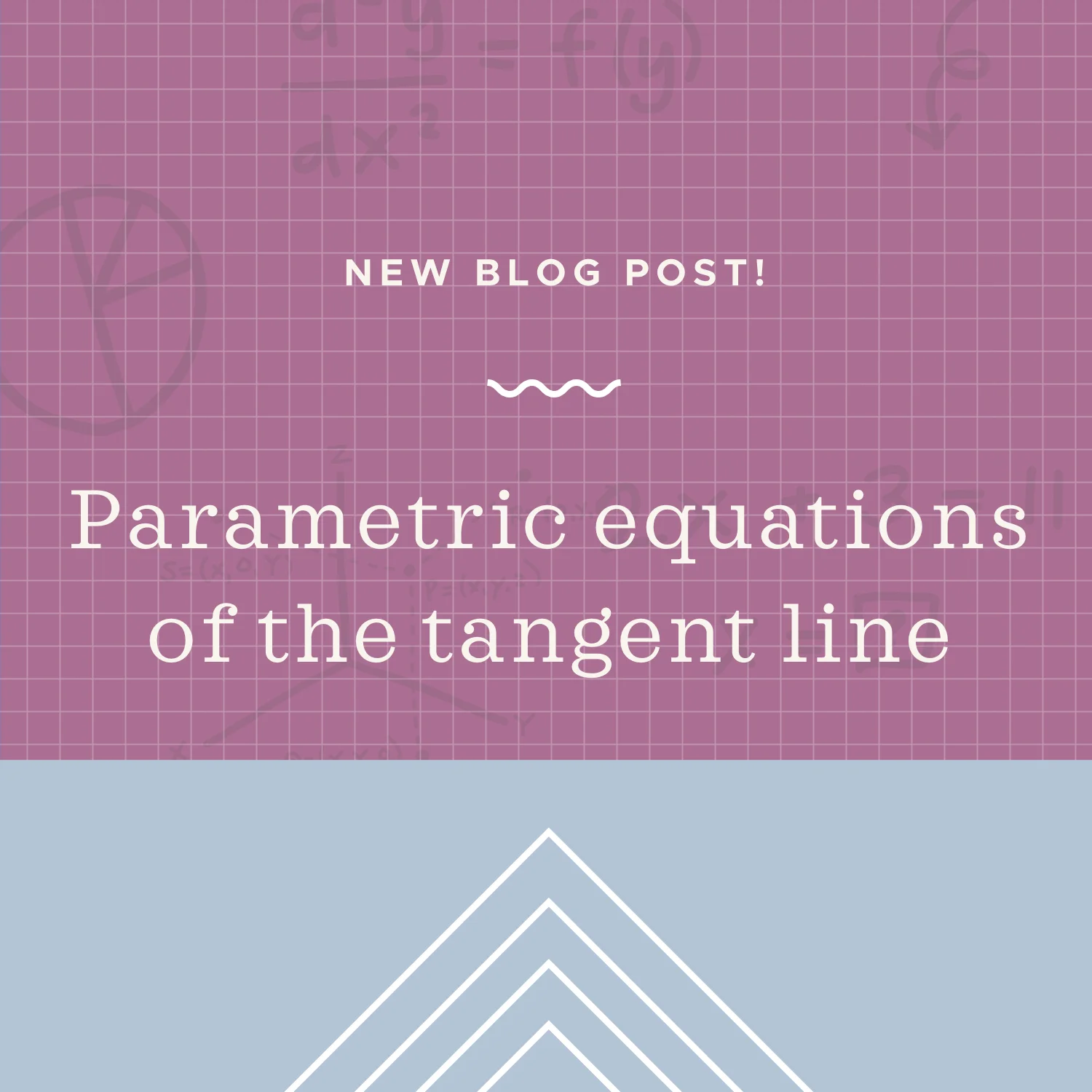The parametric equations of the tangent line of a vector function r(t)=[{r(t)_1,r(t)_2,r(t)_3] are x=x_1+r'(t_0)_1t, y=y_1+r'(t_0)_2t. and z=z_1+r'(t_0)_3t.
Read MoreWhen we reparametrize a curve, it means that we rewrite it in terms of an independent variable. There’s not a specific variable that’s always used in reparametrization, but it’s common to see s used.
Read MoreWhen we want to find the combination of two vectors, we take just match up the initial point of the second vector with the terminal point of the first vector, and then we draw a new third vector from the initial point of the first to the terminal point of the second.
Read MoreIf we need to find the volume of a parallelepiped and we’re given three adjacent edges of it, all we have to do is find the scalar triple product of the three vectors that define the edges.
Read MoreThe scalar triple product |a•(b x c)| of three vectors a, b, and c will be equal to 0 when the vectors are coplanar, which means that the vectors all lie in the same plane.
Read MoreTo find the domain of a vector function, we’ll need to find the domain of the individual components a, b and c. Then the domain of the vector function is the values for which the domains of a, b, and c overlap.
Read MoreTo find the limit of a vector function, we’ll need to take the limit of each term separately. So we’ll apply the limit to each component of the vector function, and then evaluate each limit.
Read MoreTo find the derivative of a vector function, we just need to find the derivatives of the coefficients when the vector function is in the form r(t)=(r(t)1)i+(r(t)2)j+(r(t)3)k. The derivative function will be in the same form, just with the derivatives of each coefficient replacing the coefficients themselves.
Read MoreTo find the integral of a vector function r(t)=(r(t)1)i+(r(t)2)j+(r(t)3)k, we simply replace each coefficient with its integral. In other words, the integral of the vector function comes in the same form, just with each coefficient replaced by its own integral.
Read MoreTo find the arc length of the vector function, we’ll need to use a specific arc length formula for L that integrates the root of the sum of the squared derivatives. L will be the arc length of the vector function, [a,b] is the interval that defines the arc, and dx/dt, dy/dt, and dz/dt are the derivatives of the parametric equations of x, y, and z respectively.
Read MoreTo find the unit tangent vector for a vector function, we use the formula T(t)=(r'(t))/(||r'(t)||), where r'(t) is the derivative of the vector function and t is given. We’ll start by finding the derivative of the vector function, and then we’ll find the magnitude of the derivative. Those two values will give us everything we need in order to build the expression for the unit tangent vector.
Read MoreTo find curvature at a particular point, we’ll 1) Find r'(t) and use it to 2) Find |r'(t)| and then use r'(t) and |r'(t)| to 3) Find T(t), and then use it to 4) Find T'(t), and then use it to 5) Find |T'(t)|, and then use |r'(t)| and |T'(t)| to 6) Find curvature at the point t that we’re interested in.
Read MoreIn single variable calculus we learned how to evaluate an integral over an interval ???[a,b]??? in order to calculate the area under the curve on that interval. We could approximate the area under the curve using a Riemann sum, or calculate the area exactly using an integral.
Read MoreA vector field F is called conservative if it’s the gradient of some scalar function. In this situation f is called a potential function for F. In this lesson we’ll look at how to find the potential function for a vector field.
Read MoreIndependence of path is a property of conservative vector fields. If a conservative vector field contains the entire curve C, then the line integral over the curve C will be independent of path, because every line integral in a conservative vector field is independent of path, since all conservative vector fields are path independent.
Read MoreGreen’s Theorem gives us a way to change a line integral into a double integral. If a line integral is particularly difficult to evaluate, then using Green’s Theorem to change it to a double integral might be a good way to approach the problem.
Read MoreIf we want to find the acute angle between two lines, we can convert the lines to standard vector form and then use the formula cos(theta)=(a•b)/(|a||b|), where a and b are the given vectors, a•b is the dot product of the vectors, |a| is the magnitude of the vector a (its length) and |b| is the magnitude of the vector b (its length).
Read MoreVector, parametric, and symmetric equations are different types of equations that can be used to represent the same line. We use different equations at different times to tell us information about the line, so we need to know how to find all three types of equations.
Read MoreIn this lesson we’ll look at the step-by-step process for finding the equations of the normal and osculating planes of a vector function. We’ll need to use the binormal vector, but we can only find the binormal vector by using the unit tangent vector and unit normal vector, so we’ll need to start by first finding those unit vectors.
Read MoreThe unit tangent vector T(t) of a vector function is the vector that’s 1 unit long and tangent to the vector function at the point t. Remember that |r'(t)| is the magnitude of the derivative of the vector function at time t. The unit normal vector N(t) of the same vector function is the vector that’s 1 unit long and perpendicular to the unit tangent vector at the same point t.
Read More





















